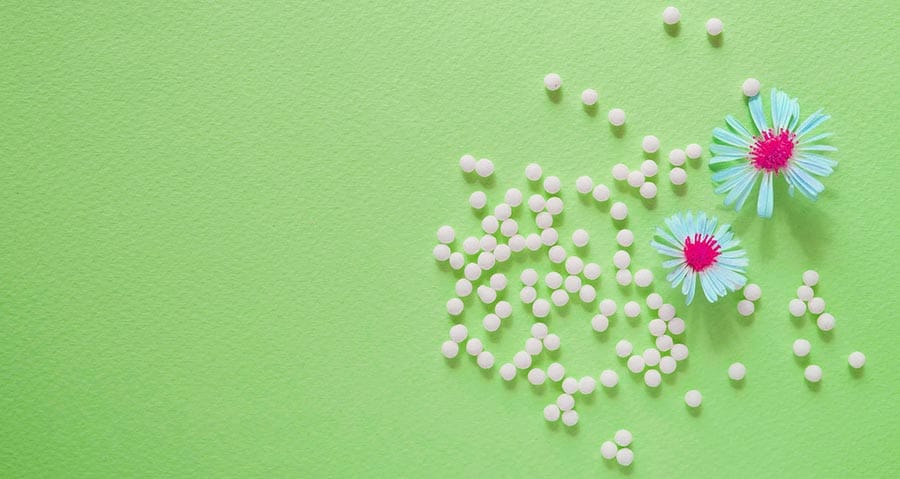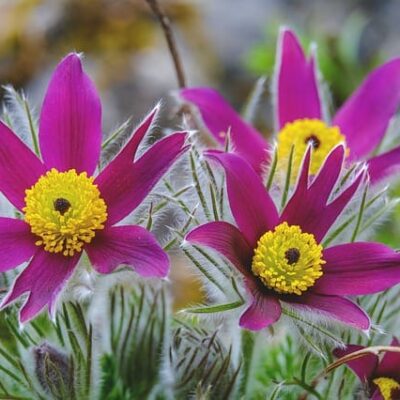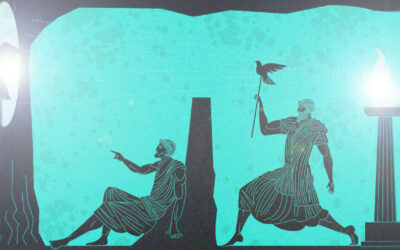Antonie Peppler wrote this article about the meaning of childhood diseases, which sheds a new perspective on whether they can be treated. For most parents, this issue is a repeating challenge that needs to be avoided, even though many realize that those phases of illness are somehow coherent with specific evolutionary processes happening with their children. In this article, we like to portray the interconnection between symptoms and personal development in young individuals. Antonie Peppler is the inventor of Creative Homeopathy, and this is her take on childhood diseases and their meaning, translated from a German article.
Can childhood diseases really be treated?
Introduction
The fundamental question of “diseases” is whether an illness is accidental. Conventional medicine assumes that a person becomes ill if he has become too weak or if his immune system can no longer sufficiently defend itself against bacteria and viruses that surround him. This understanding is based on the materialistic paradigm in Cartesian science that is reluctant to see a profound interconnectedness between body, mind, and soul.
The attitude of orthodox medicine
Childhood diseases are somewhat exempt from this because it is common for most children to have those challenges. Some children get them, and some do not. Further thoughts are hardly wasted on it. One also tries to avoid childhood diseases by vaccination. To see illness as a malfunction, as a mechanical defect of a machine caused by wear and tear, faulty operating conditions, or lack of maintenance, is essentially the way of thinking of orthodox medicine.
The disregard for our subconsciousness
Close examination shows a profound difference between a living being and an artificial object or machine. The difference is that the creative impulse, the idea giver, forms a unity with the living being. The divine part, if you like, is firmly connected with the physical entity and causes transformation and development. Thus, illness and healing always have something to do with the human being.
It is entirely different from objects—the creator or inventor is separated from the thing. A person has the idea to create an object, e.g., a table, and puts this into action. The creating consciousness and the table are two separate parts, so a healing process of an object is impossible. A table can hardly regenerate itself or restore itself by its own device.
Clues in our language to the psychological cause
If we pay attention to our language, it is full of statements about the thesis that illness has to do with the person himself. Having a cold is also called “having a nose full,” the common cold stands for “being frustrated,” and the headache symbolizes “racking one’s brains.”
If a personality wants to change his life situation but perhaps has too little courage to go through a conflict, he becomes ill. In sickness, the individual is often forced to rest and gather strength to go into “battle” or reinforce their ignorance. In the latter case, however, the choice of ignorance the dissatisfaction will reemerge in one way or another. It will ultimately lead the personality to implement the necessary change in life.
Therefore, it is a question of perspective whether an illness is the product of chance or weakness or whether the disease is seen as the unconscious language that gives impulses to strengthen one’s personality and enable the process of individualization.
Illness as an opportunity to Individualize
Mumps for Example
Parents who closely observe their children during and after a childhood illness clearly notice that the “small” personality has made significant developmental steps within the framework of character evolution. This expansion becomes most apparent after having gone through such a process. In this sense, every childhood illness has an individual statement, a particular meaning. This is illustrated, for example, by the disease mumps.
Mumps – Parotitis epidemica
Mumps is characterized, in addition to headaches and pain in the limbs and severe freezing of the patient, above all by the inflammation of the parotid gland with severe swelling around the ear. Mumps is ultimately not a threatening childhood disease. The only problematic aspect is that if the condition does not manifest enough, it can lead to chronic inflammation of the glands. Especially in boys, inflammation of the testicles can emerge, possibly leading to infertility.
If we look at this disease through symbolism, the little patient makes “big cheeks.” Colloquially, this means that he starts to assert himself. He thus unfolds his personality and says what he wants. If this process takes place insufficiently, complications could arise, and in this case, the boy can no longer pass on his psychological imprints, even in adulthood. He can become incapable of procreation.

Mumps from an evolutionary point of view
If we also consider the evolution of humans – after all, we come from the water – then at the place where the swelling occurs in mumps, there used to be the gills. In the water, we were still carried along. We did not yet feel our weight. Colloquially, our weight also symbolizes our personality—a personality has gravity.
From this perspective, the disease mumps describes the straightening process of the human being. Having come from the water to the land, he has the task of making himself unadulterated, straightening up, and developing a personality.
From this perspective, each childhood disease has its meaning, which in its own way contributes to the development of personality. A child must go through this childhood illness to cope well with the individualization process.
Childhood diseases and individuality in homeopathy
Support Individualization
Each homeopathic remedy corresponds to a possible mental state of a living being. Suppose a sick person is treated with a homeopathic remedy. In that case, it gives an impulse to the patient’s unconscious so that the patient can make a process of development and cognition.
For the disease mumps, for example, Pulsatilla is a suitable impulse-giver.
The meaning of Pulsatilla
During a spring hike, e.g., across the meadows of Switzerland, one still often encounters the pasque flower (Pulsatilla pratensis). The many-headed rootstock stretches its wide-open flowers towards the sun. It looks as if a group of young pubescents is having fun together.
The plant is delicate, long-stalked, and has primarily light purple flowers. The stem is hairy. If you look closely, “small barbs” become apparent.
Just as in the sun, the flower is wide open, so quickly it is closed in cloudy weather. In stormy conditions, the plant turns its head down. The pasque flower prefers to grow on calcareous soil.

What the Pulsatilla personality likes:
The sun or good weather symbolizes warmth, a good mood, and a pleasant disposition. A good attitude, lots of fun, and shallow communication, such as coffee klatch, and a cozy beer table with a card game, seem important to the person who needs Pulsatilla. The more superficial and non-committal, the better.
What the Pulsatilla personality does not like:
Gloomy or bad weather symbolizes a bad mood, to the point of thunderstorms and conflict. The Pulsatilla personality does not like this at all. To openly carry out and solve a conflict? That does not necessarily have to be. A battle means confrontation, facing disharmony, expressing one’s feelings, and standing by them openly. The personality would have to confront itself, would have to demand its needs, would have to assume self-responsibility.
Further observations of Pulsatilla:
The delicate barbs on the stem are also interesting because you can “attach” yourself somewhere and “repel” someone with a barb. The ability to feel comfortable with others in fun, superficial companionship is one thing; having a solid partner to hang on to and resolve conflicts is another.
If a partner provokes a conflict, one can “hang out” if necessary and ward off the person noncommittally with many emotional expressions, such as crying loudly. Or put someone in debt or assign blame, “keep someone emotionally busy.”
Interestingly, the pasque flower grows on calcareous soil. If it is considered that lime symbolizes protection and support, the apparent need for protection of Pulsatilla patients becomes explicable.
Those who do not face up to themselves need an external backbone, firm support, which keeps away all conflicts and guarantees peace as much as possible.
Through the medicine Pulsatilla, the mumps sufferer is given the impulse to learn to straighten up, deal with conflicts, become authentically honest, and become capable of confrontation.
Homeopathic Conclusion
Self-responsibility
Of course, Pulsatilla is not the only remedy for the disease mumps. It is only an example of how to support the process of recovery and, simultaneously, the process of developing a person towards expanding their personality. Homeopathic remedies are different from orthodox “medicines,” which silence the patient’s somatizations and symptom language.
The homeopathic remedies give impulses to the unconscious so that unresolved conflicts of a person, which otherwise express themselves in illness, can be reactivated and thus processed. A child, who has learned through imitation, must begin to activate his impulse in the sense of self-responsibility.
For this purpose, it is imperative to go through childhood illnesses. Still, it is also a blessing and extremely helpful to support this developmental process via homeopathic treatment or, under certain circumstances, to make it possible in the first place.
The original article was written by Antonie Peppler and translated by Christian Köhlert.














0 Comments